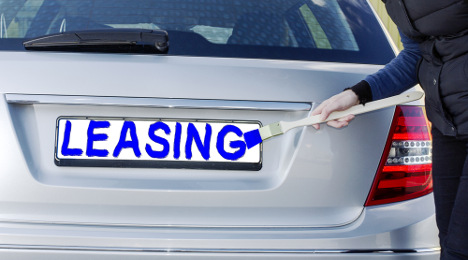2 twists to leasing resurgence

By subscribing, you agree to receive communications from Auto Remarketing and our partners in accordance with our Privacy Policy. We may share your information with select partners and sponsors who may contact you about their products and services. You may unsubscribe at any time.
IRVINE, Calif. and SANTA MONICA, Calif. –
Leasing’s resurgence and market impact doesn’t look like it will end any time soon.
Ironically, however, it appears to be making more noise in the truck market and among mainstream brands than their car and luxury counterparts.
Relatively speaking, of course.
“Leasing’s influence on industry sales shows no sign of relenting; it made up 28 percent of new-car sales in June. Interestingly, leasing is bucking traditional sales trends by playing a bigger role in new truck sales,” said Jessica Caldwell, director of industry analysis at Edmunds.com
“Even though trucks are leased at relatively lower rates, small truck leasing is up 34 percent from last June and large truck leasing is up 4 percent year-over-year,” she added.
Along with improving fuel-efficiencies on the truck side, a favorable gas-price environment and low interest rates, the fact that leasing is near 30 percent is one of a few factors allowing the ongoing shift towards trucks and SUVs and away from smaller/traditional midsize cars, says Kelley Blue Book senior analyst Alec Gutierrez.
Subscribe to Auto Remarketing to stay informed and stay ahead.
By subscribing, you agree to receive communications from Auto Remarketing and our partners in accordance with our Privacy Policy. We may share your information with select partners and sponsors who may contact you about their products and services. You may unsubscribe at any time.
“With low interest rates, with leasing still close to 30 percent (of new-vehicle retail volume), not to mention the fact that gas is at $2.80 per gallon, it’s really helped to foster an environment where trucks and SUVs have grown in terms of interest from consumers,” Gutierrez said during a conference call with the media on Wednesday.
Conversely, consider what’s happening in some of the smaller car segments in the new-car market overall.
Caldwell noted: “The industry's smallest cars continue to struggle. Subcompact cars averaged 99 days to turn last month, which is a near record high and 21 days higher than in June 2014. Small cars likely are feeling pressure from the new crop of compact and subcompact SUVs like Honda HRV and Jeep Renegade, which have proven popular, especially with Baby Boomers.”
Luxury vs. Mainstream Leasing
Lease penetration on the luxury side has seen growth, just not as steeply as the increases on the mainstream side, Gutierrez said during the call.
The mainstays within the luxury market are still netting lease rates between 50 percent and 60 percent, which certainly still beats lease penetration levels for non-luxury brands. However, the rate of growth has been stronger for non-luxury brands.
Gutierrez estimates that your typical luxury brand has seen a 3- to 5-percentage-point increase in lease penetration in the last year (“depending on who you’re looking at,” he said), while some of the mainstream brand has increased as much as 5 to 7 percentage points.
“The numbers are growing, but they’ve mostly stabilized and are not growing as fast as the non-luxury sector,” Gutierrez said.


